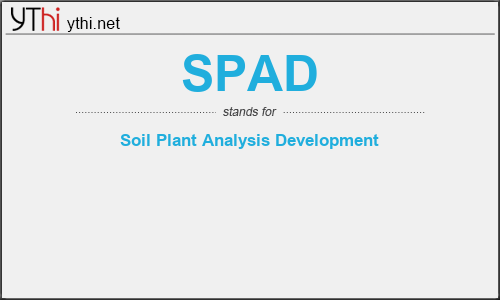What does SPAD mean? What is the full form of SPAD?
The Full Form of SPAD is Soil Plant Analysis Development.
The Soil Plant Analysis Development (SPAD) chlorophyll meter is one of the most commonly used diagnostic tools to measure crop nitrogen status. However, the measurement method of the meter could significantly affect the accuracy of the final estimation. Thus, this research was undertaken to develop a new methodology to optimize SPAD meter measurements in rice (Oryza sativa L.). A flatbed color scanner was used to map the dynamic chlorophyll distribution and irregular leaf shapes. Calculus algorithm was adopted to estimate the potential positions for SPAD meter measurement along the leaf blade. Data generated by the flatbed color scanner and SPAD meter were analyzed simultaneously. The results suggested that a position 2/3 of the distance from the leaf base to the apex (2/3 position) could represent the chlorophyll content of the entire leaf blade, as indicated by the relatively low variance of measurements at that position. SPAD values based on di-positional leaves and the extracted chlorophyll a and b contents were compared. This comparison showed that the 2/3 position on the lower leaves tended to be more sensitive to changes in chlorophyll content. Finally, the 2/3 position and average SPAD values of the fourth fully expanded leaf from the top were compared with leaf nitrogen concentration. The results showed the 2/3 position on that leaf was most suitable for predicting the nitrogen status of rice. Based on these results, we recommend making SPAD measurements at the 2/3 position on the fourth fully expanded leaf from the top. The coupling of dynamic chlorophyll distribution and irregular leaf shapes information can provide a promising approach for the calibration of SPAD meter measurement, which can further benefit the in situ nitrogen management by providing reliable estimation of crops nitrogen nutrition status.
SPAD
means
Soil Plant Analysis Development![]()
Translate Soil Plant Analysis Development to other language.


Leave a Reply
You must be logged in to post a comment.